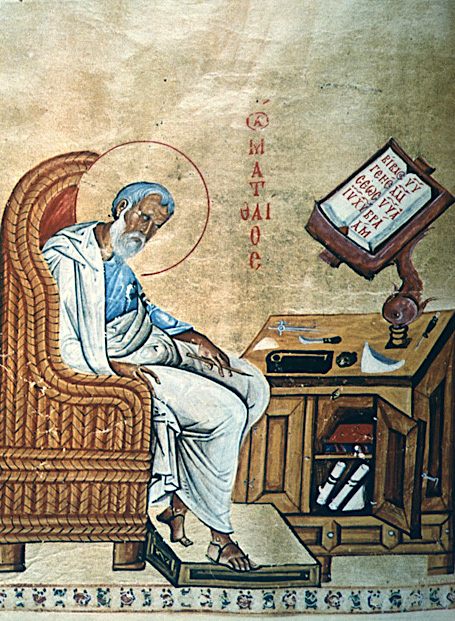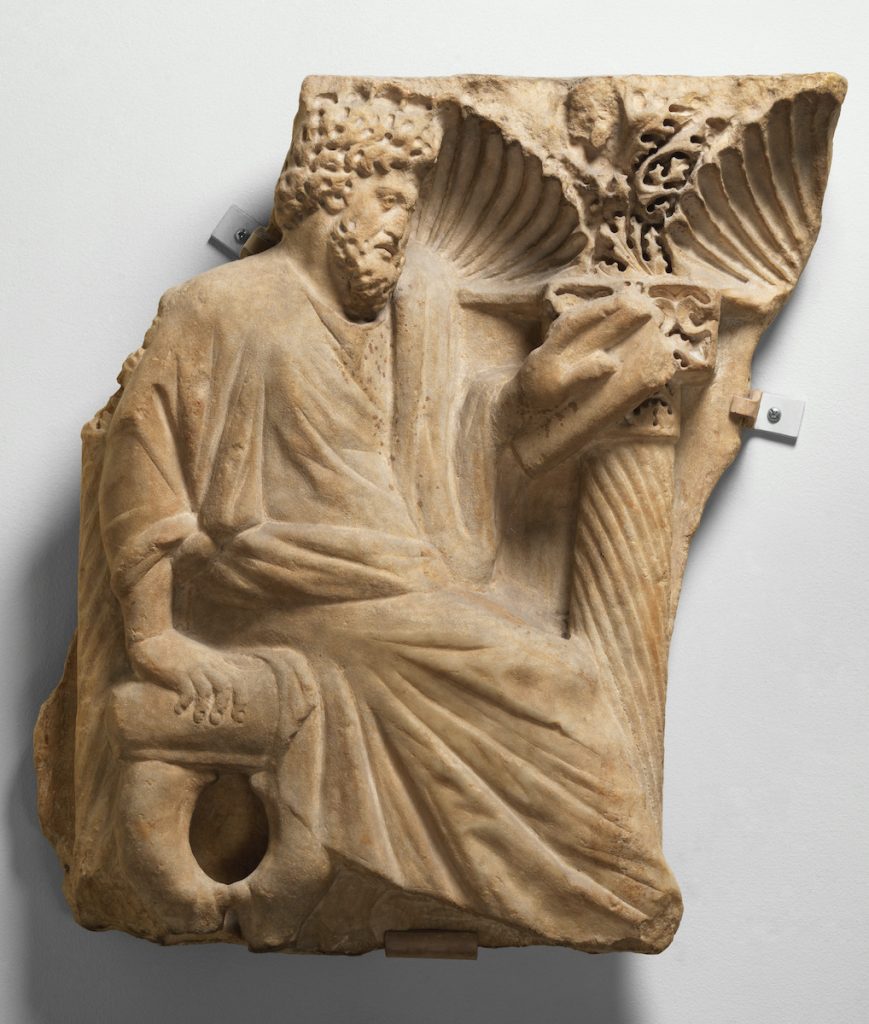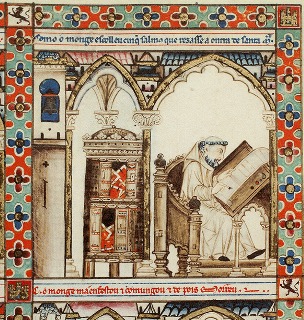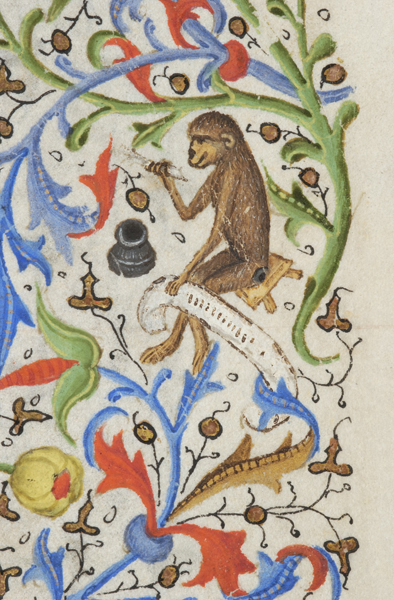

As the fall 2020 semester begins and the Index staff continue to work remotely, each of us connecting from different locations, our home libraries and desks have become essential tools in our research. They call to mind medieval images in which the scribe’s desk and well-stacked bookshelves are familiar iconographic attributes of the Evangelists, as well as theologians, scholars, physicians, and literati, as they labored in their study spaces (see Index subjects: Bookcase, Scholar, Physician, Literatus, and Philosopher Type). Their desks took a variety of forms and shapes, from tall book stands or lecterns, sometimes decorated with animals, birds, and foliage, to round or squat tables of a simpler design. Medieval images of scribes and writers often show the surfaces of their desks covered with open books or sheets, some with scrawled lines (search Index keyword: pseudo-inscriptions), inkhorns and inkpots, knives, pen cases, and a spare stylus or two.


Working in a modern study space, many of these similar tools are within my reach: pens, scissors, a pencil cup, and plenty of Post-it Notes containing my jotted reminders—arguably legible! My computer desktop is a hub for images of medieval works of art, articles, and spreadsheets that help organize my Index work. To the right of me, sits a modest collection of tomes (to name a few, Emile Mâle’s Religious Art in France: The Late Middle Ages; Roger Wieck’s Painted Prayers: The Book of Hours in Medieval and Renaissance Art; Baxter’s Bestiaries and Their Users in the Middle Ages, and the catalogues The Splendor of the Word and The Golden Age of Ivory Gothic Carvings in North American Collections). Some books are my own and some are out on temporary loan from the Index’s research library and from Firestone Library, but all are bolstering this new environment of cataloguing and scholarship from home.
For Index research staff, this means that our working desktops (both physical and virtual) and our carefully curated home libraries (whether lining our walls or nested digitally into desktop folders) will support our ongoing remote activities. This semester, we will continue to pursue new art historical research for additions to the database, including works from the original print backfiles, from monumental mosaics to illuminated manuscripts and ivory objects. We remain focused on expanding the Index collection to present the rich array of iconography from the global Middle Ages. We will also continue to refine the database by building and improving work of art location authorities, further developing Index subject classifications that improve thematic browsing, and implementing the new hierarchical browse tool for researching the placement of medieval iconography within structures. Above all, we will remain available to support researchers at all levels in their use of the online Index database.


Wherever you may be this term—whether you feel like a monk in a cell or a monkey with an inkpot—we hope that you are well and looking forward to your study, surrounded by the tools of your scholarship. We look forward to hearing how we can help serve your research and teaching in the upcoming academic year.
